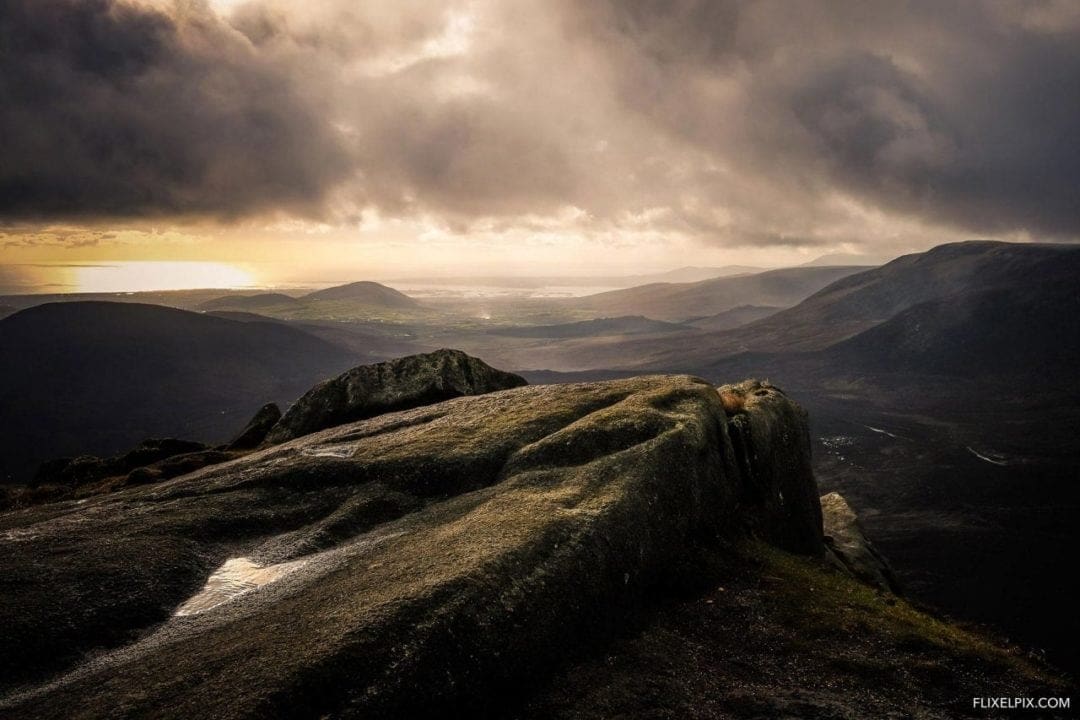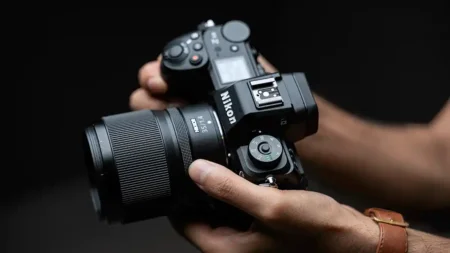Landscape photography combines the joy of photography with the beauty of the great outdoors. Personally, exploring the mountains is now as much of the enjoyed experience than the process of capturing the views.
Landscape photography doesn’t have to be all about ‘camera technology’ or ‘post production workflow’. Landscape photography is about getting out in the great outdoors, breathing the pure air and really concentrating on the natural landscape. Here are just a few tips that I hope will help you develop your craft.
Be comfortable with your gear
Landscape photography can involve a recurring challenge of finding new places to capture, this often involves travel and if you are like mountain landscapes it can also involve a fair bit of walking and hiking.
Being comfortable when out on a hike is important and the weight of all those small pieces of camera gear adds up. Your valuable camera can also be awkward to carry when walking, there are numerous straps that aim to solve the problem but it’s a personal preference, find what works for you, learn to travel with the bare essentials, find the right combination of lens, filters and tripods.
If you really want to boost your creativity, only pack a single camera body and lens. Less choice on the technical side will force you to really study the scene and what you are capturing.
Be antisocial
Often locations are best at the extremes of the day, get up early or stay up late. The best shots take work and this often means visiting locations at anti-social hours. It isn’t all difficult though, these off-peak hours mean there is generally no one else around and you get to see nature at its very best. There is something therapeutic about seeing the sun rising and revealing the landscape through illumination.
Don’t be put off by bad weather, a pure blue sky may by preferred by walkers but it can be boring when it comes to photography. If are heading out (especially if you are on your own) put safety first, always remember to take proper precautions in the mountains, let someone know where you are going and when to expect you back.
Also make sure you know how to navigate with a map and compass. If you are new to walking in the outdoors it is wise to attend a navigation / safety course at one of the local outdoor centres.
As for the photography, don’t be put off it takes two or three visits to the same location at 4am to capture the ideal image, the time investment pays off when you capture something really special.
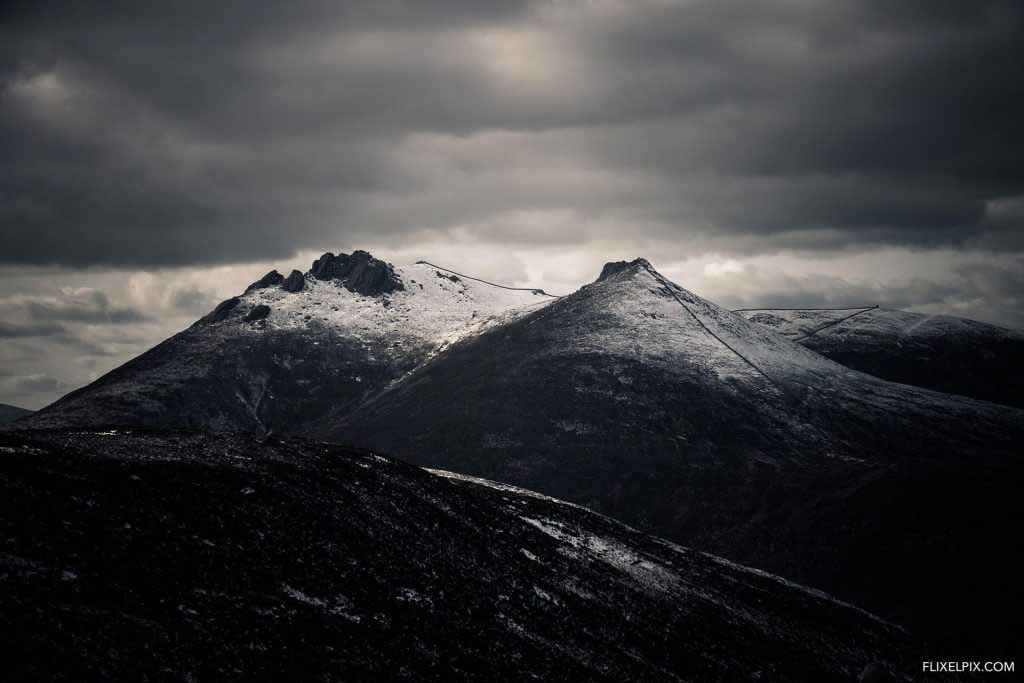
Composition is key
It doesn’t matter if you have the best, most expensive camera in the world, if the composition isn’t right the photograph simply won’t be right. A good photographer can capture images with any camera. Invest in your craft first and your camera second, develop your eye, study the whole concept of composition in both art and film.
It is quite remarkable just how much of composition is mathematical, learn the wining formulas and apply them creatively in your work. It’s amazing how looking for leading lines and shapes in the natural landscape can lead to the best images.
It’s worth spending two or three minutes just looking at the scene without even a camera in your hand. Think about why you want to capture the view and how do you communicate that same sense and reason to your audience?
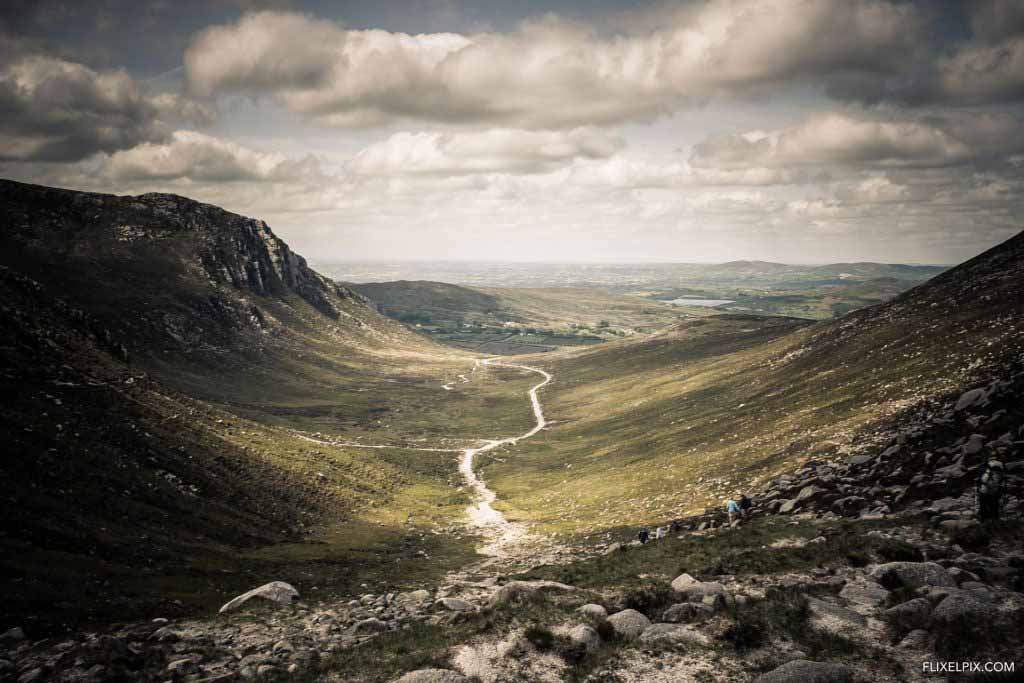
Explore with the Exposure dial
Landscape photography can involve the fine balance of shadows and extreme light. In Northern Ireland we can see the extremes of light and dark in a single view. The exposure dial is one of the most under used tools in photography, resting at your thumb you can almost literally dial in drama by underexposing the image by a stop.
I love under exposing my images to preserve as much of the detail and contrast as possible. Don’t worry if you go too far as you can always rebalance the exposure in Lightroom. If your camera offers a live view through the LCD screen it is worth watching the impact reducing the exposure level has on a scene.
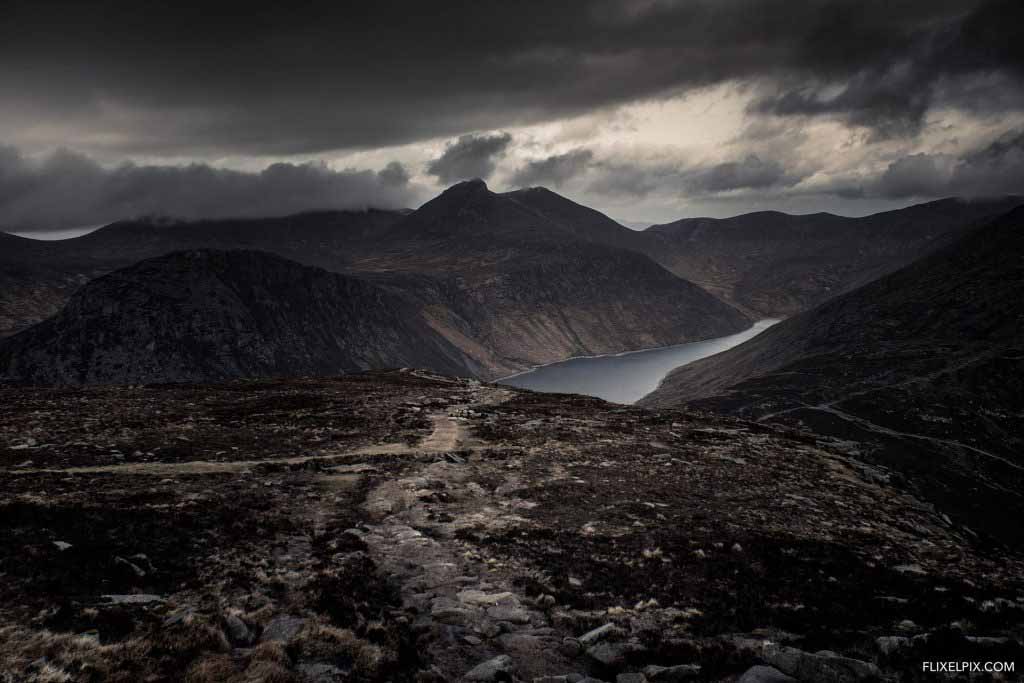
Communicate the scale
A mole hill can appear like a mountain in a photograph if there is no benchmark that offers scale. If you want to capture the vast open space of the mountains it is important to communicate the scale of what you are seeing to your audience.
For this reason, you may have seen a number of photographers adding a person (often themselves by remote shutter release) into the frame. In the image (above) it is only when you spot the tiny person walking along the path do you truly get a sense of the size of the mountains. Look hard at the centre of the photograph.
Learn by your mistakes
View your less favourable images as a source of learning, what went wrong? what would you do differently the next time you visit the location? Having a target image in mind can be a great challenge to work towards.
Equally going out without any expectations and an open mind can mean a more relaxed, creative approach. Creativity happens when you engage with a situation, it can’t be planned or defined, but it’s a great feeling when it clicks into place.
Do it because you enjoy it
Forget the Instagram ‘like count’, get out and take photos because you enjoy it, don’t try and please an audience. If you don’t enjoy getting out into the outdoors and documenting your discoveries, then you never will. For me, it’s about getting out into the mountains, the photographs, at the end of the day are a bonus in the form of an aide-memoire.
To discover more about David Cleland please check out his website at https://flixelpix.net/
